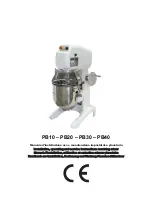
M2500—Owner’s Manual
1
Introduction
Thank you for purchasing the Yamaha M2500 mixing console. The M2500 is a highly cost-
effective mixing console that features functionality such as scene memory, PAN control
that is switchable between LR/LCR, and GROUP/AUX FADER FLIP switches. In order to
take full advantage of the M2500’s functionality and ensure trouble-free use, please read
this manual carefully.
Note:
• This manual assumes that you have an understanding of basic mixing console opera-
tion and terminology.
• The M2500 series includes five models: M2500-24, M2500-32, M2500-40C, M2500-
48C, and M2500-56C. This manual bases its explanation on the M2500-24. Differences
in the specifications of each models are given in curly brackets { }.
Contents
Features of the system............................. 2
Control panel.......................................... 3
Input channel section ......................................... 3
GROUP/AUX master section............................. 9
GROUP/AUX FLIP switch ............................... 14
Stereo/monaural master section ...................... 16
Matrix section ................................................... 18
Monitor section ................................................ 19
Talkback/oscillator section............................... 21
Meter select section........................................... 22
Control section ................................................. 22
Meter bridge...................................................... 24
Rear panel............................................. 25
Monaural input channel input/output jacks... 25
Stereo input channel input/output jacks......... 26
Master section input/output jacks ................... 27
The Scene Memory function ................. 30
What is scene memory? .................................... 30
Modes of the scene memory function ............. 30
Operation in Normal mode ............................. 31
Check mode operation ..................................... 32
Utility mode procedures................................... 34
Control change table ........................................ 36
Mute groups...................................................... 37
About the local control circuit ......................... 38
Error messages ...................................... 39
Specifications ........................................ 40
General specifications ...................................... 40
Input/output characteristics ............................ 41
Other ................................................................. 42
Dimensions ........................................... 43





































